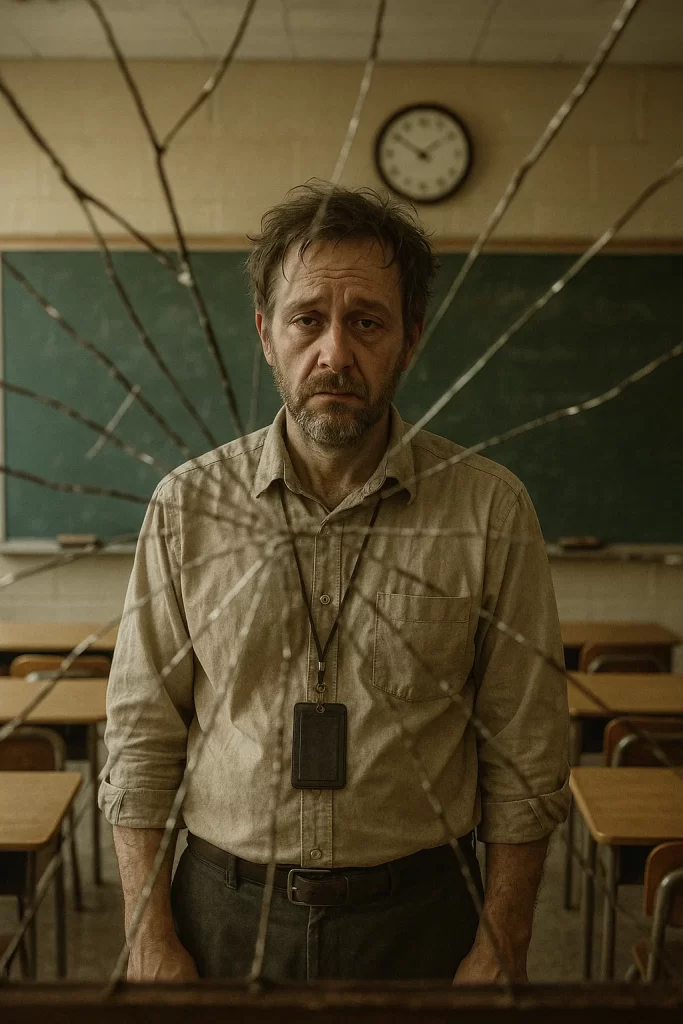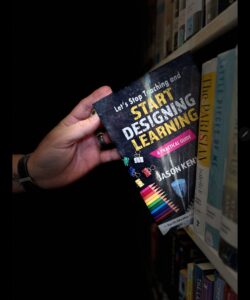Teaching isn’t hard because it’s bad work. It’s hard because we’ve piled it high with the kind of work that doesn’t work. Work that looks good on a lesson plan, sounds good at a board meeting, and feels good on paper, but leaves teachers running on fumes by fourth period on a Tuesday.
We keep losing good people. Not because they can’t teach. But because we’ve asked them to spend their best energy chasing things that don’t move learning forward. And when effort and impact get too far apart, something’s gotta give. Too often, it’s the teacher, and it doesn’t have to be this way.
The Problem: Too Much of the Wrong Work
Let’s just name it: our system has gotten really good at assigning the wrong work. Compliance. Coverage. Control. Mountains of paperwork. Micromanaged pacing guides. Data meetings that feel more like courtrooms than conversations. We tell teachers to be creative, but we wrap them in red tape. We say we want engagement, but we settle for worksheets. We hand out new strategies but never give people the time, trust, or training to use them well.
And then we act surprised when good teachers check out or walk out.
As I’ve said in Two Questions Every School Leader Needs to Answer, “more of the same only gets us more of the same.” And “the same” is no longer good enough. Not for our kids. Not for our teachers. Not for anyone.
Burnout: The Cost of Misaligned Effort
Burnout doesn’t come from doing too much. It comes from doing too much of the wrong things. You plan all night, grade all weekend, run yourself ragged between the bells, and then you sit down with the data and realize: none of it moved the needle. That’s not just tiring. That’s soul-level discouragement.
As I’ve said before, “Learning is the job.” But when you don’t know what learning really looks like, when you’re stuck measuring it by compliance, quiet, and quarterly benchmarks, you lose sight of why you came here in the first place. And slowly, the job stops feeling like a calling and starts feeling like a slow fade.
What Actually Works: We Already Know
We don’t have to guess anymore. We know what works. Research has given us the receipts.
Feedback (0.75): Not grades. Not points. Just real, timely, human feedback.
Teacher Estimates of Achievement (1.29): What you believe about kids matters more than you think.
Collective Teacher Efficacy (1.57): Get a team of teachers who believe they can move kids, and they will.
Academic Press (1.10): Don’t chase the win. Design systems that guarantee the win.
These aren’t silver bullets. They’re proven strategies. But they only work if we give teachers the space to use them. Not just once in a PD session. But consistently. Intentionally. Systematically. This work doesn’t drain you, it fuels you. Because when learners start showing evidence of real growth? It lights a fire you can feel again.
The Toll of “Busy But Ineffective”
We’ve built school like a factory. Push the kids in, keep the line moving, crank out the product. Keep the noise down, keep the scores up. But school isn’t a factory, and teaching isn’t an assembly line. And yet, that’s the system we’ve asked teachers to uphold. Day after day. Year after year.
No wonder we’re exhausted. We are tired, not because we aren’t working hard, but because we’re doing work that doesn’t work. The difference matters. Being busy but ineffective? That’s death by a thousand dry-erase markers.
The Solution: Do Work That Fuels Us
The fix isn’t less work; it’s better work. Work that actually leads to learning. Work that gives kids voice, choice, and the chance to do something real. Work that brings teachers back to life.
Imagine classrooms where learners can tell you what they’re learning, why it matters, and how they know they’ve learned it. Imagine teachers who have the autonomy to design powerful learning experiences instead of just delivering lessons. Imagine schools where we stop managing people and start leading learning. That’s not a fantasy. That’s what happens when we align our energy with what we know works.
When teachers spend their time on high-impact strategies, kids grow. Period. But the benefit isn’t just in the data, it’s in the hearts. Because when we see our learners light up, when we watch learning click, when we finally feel like we’re moving the needle? That feeds our soul. It doesn’t just stop burnout. It builds resilience.
Teachers who feel effective are more likely to stay. More likely to collaborate. More likely to innovate. They pass that energy to each other. They model it for kids. And entire buildings start to change. That’s collective teacher efficacy, and it’s electric. (Boogie, Woogie-Woogie)
A Final Word: Let’s Say It Plain
Teachers aren’t breaking because they’re weak. They’re breaking because we’ve asked them to uphold systems that ignore what we know about learning. That has to stop. We have to let go of the things that aren’t working and start building the kind of schools we actually believe in. The kind where learning leads. Where relationships matter. Where the work we ask of teachers is the kind that actually makes a difference.
Let’s stop assigning energy to things that don’t move kids. Let’s stop micromanaging teachers into silence. Let’s stop pretending that coverage is the same as comprehension. Say it with me: It’s not the work that’s breaking us. It’s the wrong work. Let’s stop teaching and start designing learning. Let’s stop breaking teachers. And let’s finally start building schools that work for everyone.


